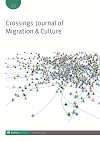
Full text loading...

This article presents reflections from a participatory visual arts-based research study with individuals seeking asylum in the north-east of England. This study invited participants to represent their lived experiences through biographical and visual methods. In doing so, they engaged in a process of ethno-mimesis, accomplished through the production of images that function as sites for meaning making, self-representation and social critique. This article demonstrates how an arts-based approach can stimulate change and transformation in individuals’ lives by supporting meaningful participation in the knowledge production process and providing a safe space where participants are empowered by sharing stories that challenge, subvert and reimagine what it feels like to be an asylum seeker. Furthermore it suggests that in contrast to interview settings, through the process of ethno-mimesis participants were offered the time and space to consciously engage with their experiences and invest in their creativity and storytelling capacities in order to render their worldviews visible. Although the findings from this study reinforce an existing rich body of ethnographic work on lived experiences of asylum seekers, this study recognizes that the identified themes highlight the enduring impact of immigration policies on individuals asylum-seeking trajectories and focuses instead on how such experiences are creatively negotiated by participants.

Article metrics loading...

Full text loading...
References


Data & Media loading...

Publication Date:
https://doi.org/10.1386/cjmc.10.1.95_1 Published content will be available immediately after check-out or when it is released in case of a pre-order. Please make sure to be logged in to see all available purchase options.